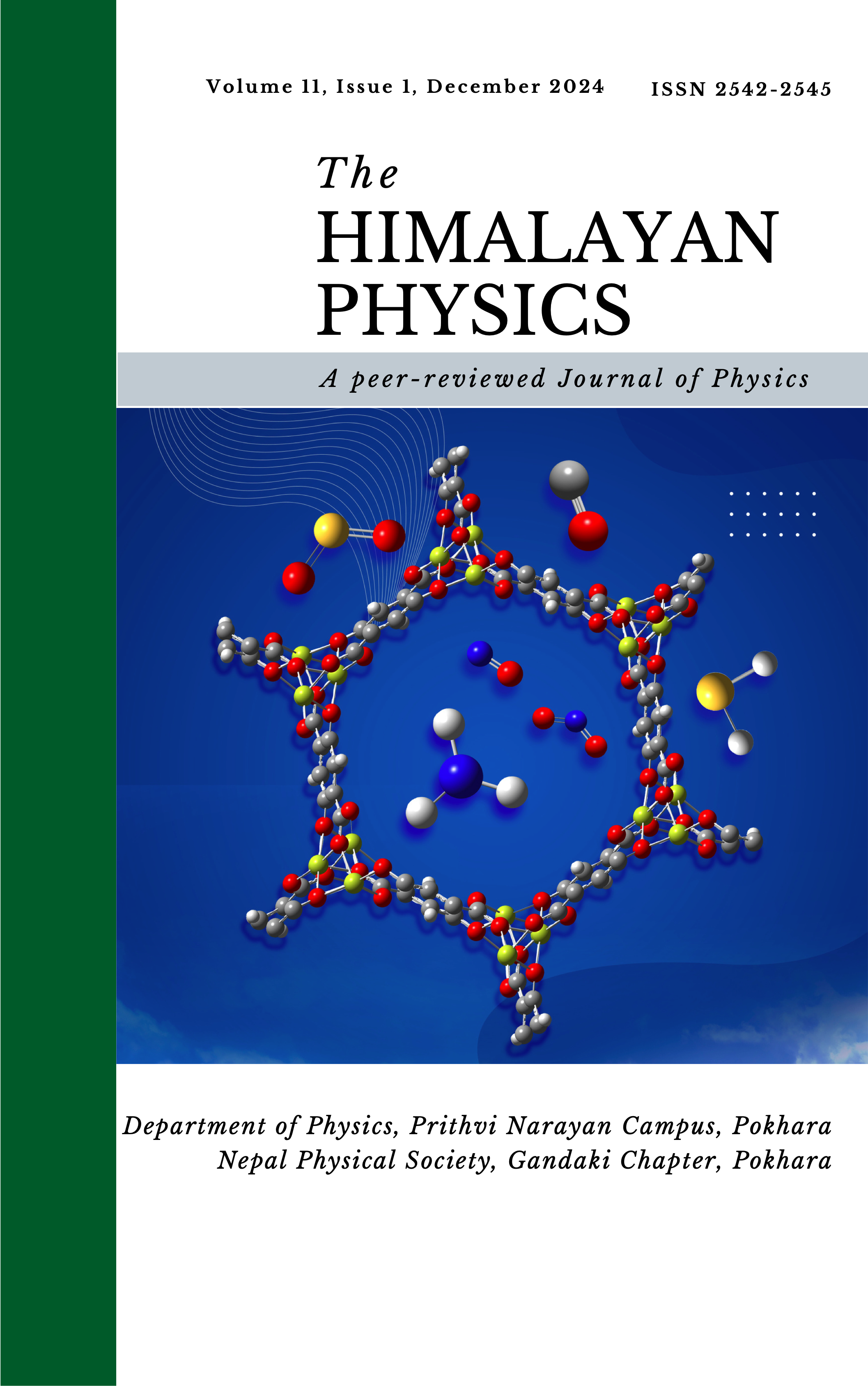Study of electronic structure of organic solar cell molecules
DOI:
https://doi.org/10.3126/hp.v11i1.68052Abstract
This study employs the 6-311G(2d,2p) basis set and the B3LYP functional within the density functional theory (DFT) framework,using Gaussian09 suite, to examine the electronic proper- ties of experimental molecules, including Benzo[1,2-b:5,5 b’]dithiophene, 2-2’bithiophene, and 3,4 ethylenedioxythiophene, crucial components of organic solar cells. The geometrical structures of these molecules are depicted, highlighting their individual components. Frontier Molecular Orbitals (FMOs) analysis reveals the significance of the Highest Occupied Molecular Orbital (HOMO) and Lowest Unoccupied Molecular Orbital (LUMO) in the electrical structure of molecules, impacting various quantum chemical parameters and predicting reactivity, stability, and solar cell efficiency. Molecular absorption coefficients, UV-visible spectroscopy data, and molecular electrostatic potential (MESP) maps further elucidate the light absorption, stability, and reactivity of these molecules. The results suggest that 2-2’bithiophene exhibits superior electron-donating capacity and nucleophilicity, while 3,4 ethylenedioxythiophene displays heightened electrophilicity. Benzo[1,2-b:5,5 b’]dithiophene shows greater light absorption capability and light-harvesting potential. Understanding these elec- tronic properties aids in optimizing the efficiency of organic photovoltaic cells.
Downloads
Downloads
Published
How to Cite
Issue
Section
License
Copyright (c) 2024 Himalayan Physics

This work is licensed under a Creative Commons Attribution-NonCommercial 4.0 International License.
This license enables reusers to distribute, remix, adapt, and build upon the material in any medium or format for noncommercial purposes only, and only so long as attribution is given to the creator. If you remix, adapt, or build upon the material, you must license the modified material under identical terms.




